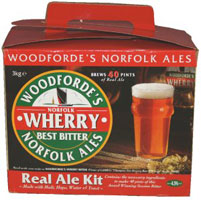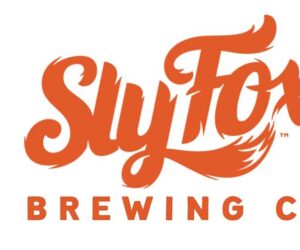Anatomy of a Commercial Clone Recipe Kit
No time to clone? Why not let the pros do the work for you? Brewers and kit manufacturers are working together to bring some of your favorite commercial beers into your home brewery.
For many homebrewers, the journey to making a first batch of beer is often the result of a thirst for craft beer that cannot be quenched by mere pub crawls and bomber bottles alone. Perhaps it is a natural extension of loving beer, or maybe it is a need to experiment beyond the limits of what’s available at the local bottle shop. And for some, there are commercial brews that are so beloved, so downright drinkable, that brewers want to take their beer appreciation a step further — to get into the craft brewer’s head and figure out the inner components of the beer itself — to clone it.
Just like trying to recreate the recipe of a favorite cookie from the local bakery, beer clone recipes are written because even though you sometimes can buy your favorite six-pack down the street, there is always going to be an attraction to making that same brew with your own two hands. At the same time, however, developing a clone recipe can also mean a brewer is in for a lot of trial and error to get the flavor and color of a beer just right.
So what if you’re not interested in making test batch after test batch, constantly swapping out grains or extracts, hops and techniques to get the beer just right? What kinds of changes need to be made in the ingredients list and the procedure to make a 5-gallon (19-L) batch? What if whoever brewed the original batch could be there to point you in the right direction? For anyone who has ever asked those questions, perhaps a commercial beer clone kit is the answer.
Much like the many hundreds of homebrewers developing clone recipes at home in attempts to replicate their favorite beers in the confines of their home breweries, kit clones scale the recipes of popular commercial beers down to a homebrew level. The difference, however, is that kit and malt companies can eliminate all the guesswork by forging professional relationships with commercial brewers, ergo getting the best information — the beer’s original recipe and procedure — straight from the source. It’s the next best thing to having the brewer standing over your kettle answering all your questions.

“At that time I was involved with Research and Development and so I was approached to carry out work to match malt extract-based kits with the commercial beers. Naturally Woodforde’s provided samples of beer for me to work with,” he said. Unfortunately, after lots of testing to determine the bitterness, color, aroma and other characteristics of the beer samples, the brewing trials with sample recipes turned out to provide, “no success whatsoever,” as far as matching the original brew. To get the job done, Mugglestone went straight to the source.
“I was not really getting anything close so I approached Woodforde’s and asked for all details from the brew house (grist ratio, hops used etc.),” he said, although the brewery was initially reluctant to share. “I signed a confidentiality agreement with Woodforde’s and after receiving the information from the brewery it was not long before matches were made that compared very well with the beer supplied by Woodforde’s.”
With this information, Muntons was able to create worts nearly identical to Woodforde’s, which were in turn evaporated into malt extracts and packaged with dry yeast for kits. Initially when the line was developed in the late 1980s and early 1990s, Muntons offered Woodforde’s Wherry, Great Eastern and Headcracker then expanded the line to include other beers like Great Eastern, Nelson’s Revenge and Admiral’s Reserve.

Much like the Woodforde’s-Muntons clone kits, Brewcraft USA’s Rogue kits are based on Rogue’s original recipes. Unlike Muntons, however, Brewcraft USA doesn’t have a malting facility to make their own malt extracts, so the cloning process was more like something a homebrewer would experience when scaling down a large all-grain recipe.
“It took a lot of calculator punching,” Southard said of trying to find the right ratio of ingredients to make an extract equivalent for Dead Guy Ale, the first Rogue kit released. Although he knew the original ingredients, converting to an extract recipe meant playing around with the character and crystal malts, such as using dark Munich, crystal 80 °L and Carastan whereas Rogue uses Carastan and crystal 60 °L, mixing and matching to achieve more unfermentable sugars in the wort, as well as adding some sugar to dry it out and prevent it from tasting syrupy. All in all, it took (you guessed it) some trial and error.
“John being John, he didn’t go into a lot of detail, he just gave me the ingredients and the hops,” said Nate Sampson, president of the Cascade Brewers Society, a homebrew club in Eugene, Oregon, and a friend of Rogue Brewmaster John Maier who helped Southard with test batches and communicating with Maier.
“It took about six batches to get it right,” said Southard, who worked closely with Maier and Sampson to find the right combination of ingredients and techniques as well as brewing and sampling test batches of extract brews . “It’s been so long since I’ve brewed an extract that I’ve forgotten how easy it was,” said Sampson. “Thirty hours on ProMash is worth thirty brews,” said Southard.
For instance, Southard originally tried using dextrose as the additional sugar, which altered the color, so he ended up using dark Belgian candy sugar. And even though Brewcraft USA followed the recipe for Dead Guy from the brewery which uses Perle and Saaz hops, brewing a smaller, 5-gallon (19-L) batch meant that there was a difference in hop utilization. To compensate, there are more hops in the kit proportionately than the original recipe.
The Dead Guy Ale kit also calls for dry hopping, which Rogue doesn’t do at the brewery. Certain ingredients and techniques, however, are more important than others when it comes to replicating, including hops, yeast and temperature. Southard says that deviating from the kit by using an ale yeast other than Rogue’s proprietary “PacMan” ale yeast, will make a good beer, but “flat out” won’t duplicate the Rogue beers. Also, fermentation temperatures should always stay in the 60–62 °F (16–17 °C) range or the beer can turn from being malty to estery.
So why did Rogue and Woodforde’s agree to share their recipes? One reason could be that the breweries have roots in homebrewing. Woodforde’s was established in 1981 by Ray Ashworth and Dr. David Crease, who were both members of the Norwich Homebrewers’ Society and Maier also started out as a homebrewer, and is still a member of the Cascade Brewers Society.
“Working with Rogue was great — maybe because John’s a homebrewer — but they look at the homebrewing community differently,” said Southard, who explained that many other breweries he contacted about making commercial kits were responsive and helpful, but Rogue took a special interest.
“I don’t believe in secrets and I don’t think this industry would exist without input from homebrewers,” said Jack Joyce, the founder and president of Rogue. “They are a gigantic and critical part to the commercial (brewing) world.”
“I’ve been doing it for a long time,” Brewmaster John Meier said of sharing his recipes. “Not just for kits but also for publications.” Similar to the Brewcraft USA project, Meier has also contributed a homebrew-sized recipe of I2PA to California-based homebrewing retailer MoreBeer! for both extract and all-grain kits after he tested the smaller batch on a MoreBeer! sculpture. Even with that information, however, MoreBeer! President Chris Graham says replicating a commercial beer can be tough.
“I think in every brewery there are house characteristics that are really tough to replicate. We’ve done homebrew-sized tests with local clubs and gave the same exact recipe pre-weighed out here and got six pretty different beers as everyone handles things differently. I was amazed at the variations of house characters that came through,” Graham said. So if you’re looking to closely replicate a beer, the more information you can get, the better.
But although commercial kits are limited for now, growing interest and strong sales indicate that we may be seeing more of these kinds of kits in the future. Southard said the Rogue kits are some of the most popular in the company’s catalog, outselling any other individual kit. And in light of the scarcity of brewing ingredients, perhaps it makes sense to have the pros work together to find the right ingredients.


